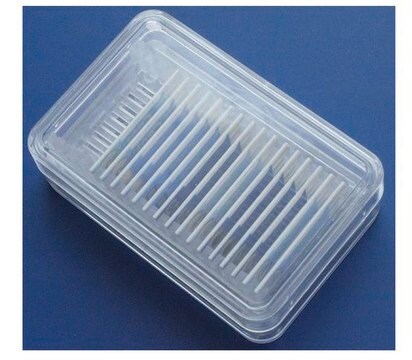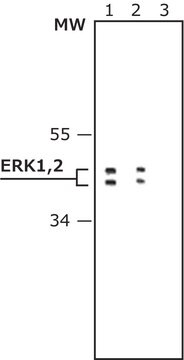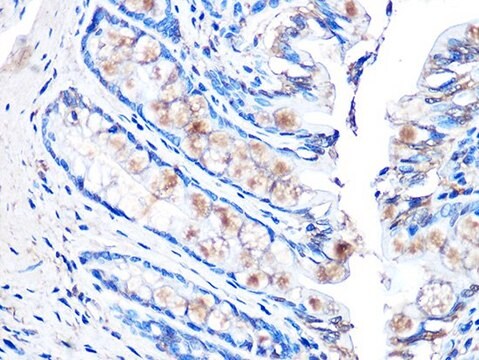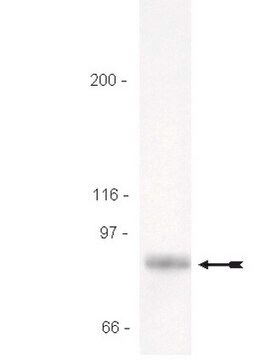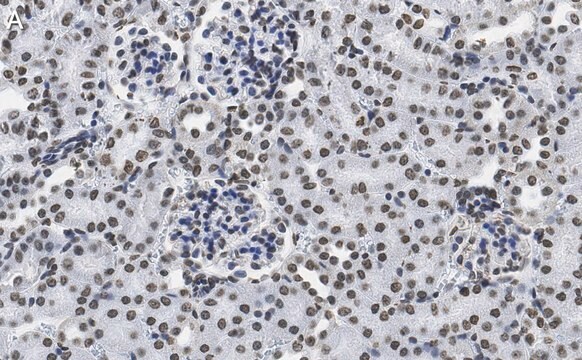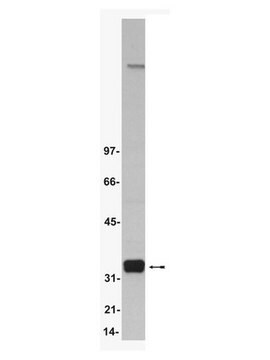OGS46
PSF-UB - PLAZMID EKSPRESYJNY PROMOTORA UBIKWITYNY
plasmid vector for molecular cloning
Synonim(y):
szybki wektor
About This Item
Polecane produkty
Formularz
buffered aqueous solution
masa cząsteczkowa
size 4880 bp
selekcja bakterii
kanamycin
Pochodzenie replikacji
pUC (500 copies)
Rozszczepienie peptydów
no cleavage
Promotor
Promoter name: ubiquitin
Promoter activity: constitutive
Promoter type: mammalian
gen reporterowy
none
Warunki transportu
ambient
temp. przechowywania
−20°C
Opis ogólny
Poziom ekspresji promotora:
Zastosowanie
Uwagi dotyczące wielu miejsc klonowania: Istnieje kilka ważnych miejsc w MCS. Obejmują one miejsce NcoI, miejsce XbaI oraz miejsca BsgI i BseRI. Miejsce NcoI zawiera kodon startowy, który znajduje się bezpośrednio za miejscem wiązania rybosomalnego Kozak i Shine-Dalgarno. Pozwala to na optymalne pozycjonowanie genów, gdy kodon startowy jest umieszczony w tym miejscu. Jeśli nie jest to wymagane i chcesz użyć miejsca downstream do klonowania genów, możesz usunąć miejsce NcoI poprzez rozszczepienie plazmidu za pomocą KpnI.
Miejsce XbaI zawiera kodon stop. Ten kodon stop jest umieszczony w określonej pozycji w stosunku do miejsc BsgI i BseRI, które znajdują się bezpośrednio za nim. Kiedy BseRI lub BsgI rozszczepiają plazmid, wytwarzają nawis TA z kodonu stop w miejscu XbaI, który jest kompatybilny ze wszystkimi naszymi plazmidami znaczników peptydowych ciętymi w tych samych miejscach. Miejsca BseRI i BsgI są niepalindromowe i rozszczepiają określoną liczbę zasad z dala od miejsca wiązania.
Za każdym razem, gdy klonujemy gen w naszym miejscu wielokrotnego klonowania, zawsze umieszczamy kodon start i stop w tych samych pozycjach w MCS. Jeśli początki i końce genów nie są kompatybilne z NcoI i XbaI, przedłużamy sekwencję do najbliższych miejsc zewnętrznych, ale utrzymujemy spójne położenie kodonów start i stop.
Sekwencja
Komentarz do analizy
produkt powiązany
Kod klasy składowania
12 - Non Combustible Liquids
Temperatura zapłonu (°F)
Not applicable
Temperatura zapłonu (°C)
Not applicable
Wybierz jedną z najnowszych wersji:
Certyfikaty analizy (CoA)
It looks like we've run into a problem, but you can still download Certificates of Analysis from our Dokumenty section.
Proszę o kontakt, jeśli potrzebna jest pomoc Obsługa Klienta
Masz już ten produkt?
Dokumenty związane z niedawno zakupionymi produktami zostały zamieszczone w Bibliotece dokumentów.
Nasz zespół naukowców ma doświadczenie we wszystkich obszarach badań, w tym w naukach przyrodniczych, materiałoznawstwie, syntezie chemicznej, chromatografii, analityce i wielu innych dziedzinach.
Skontaktuj się z zespołem ds. pomocy technicznej
